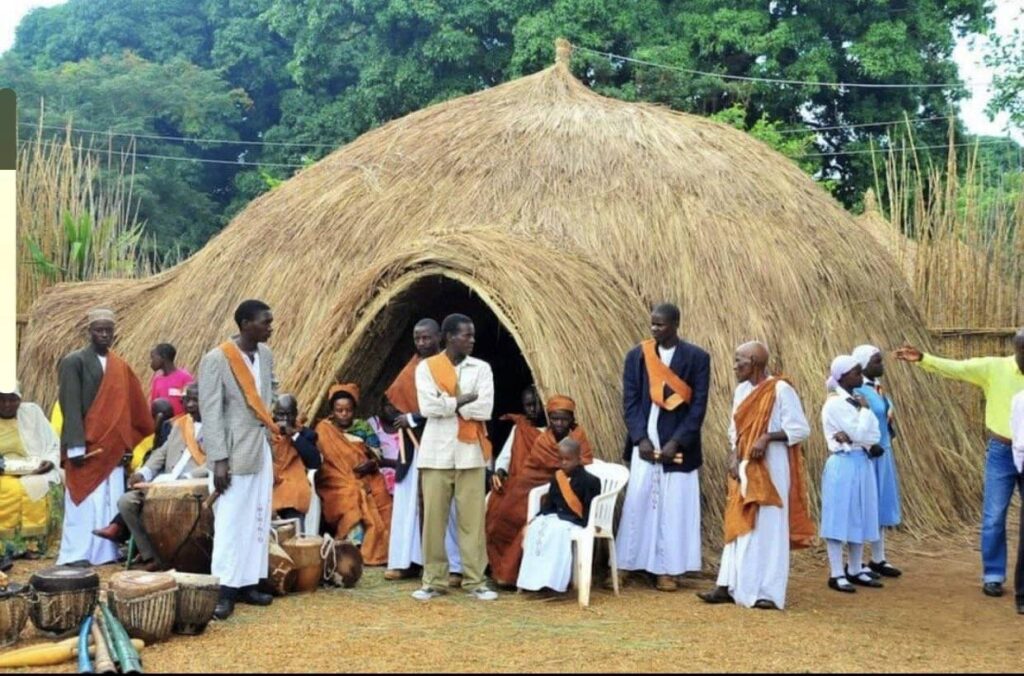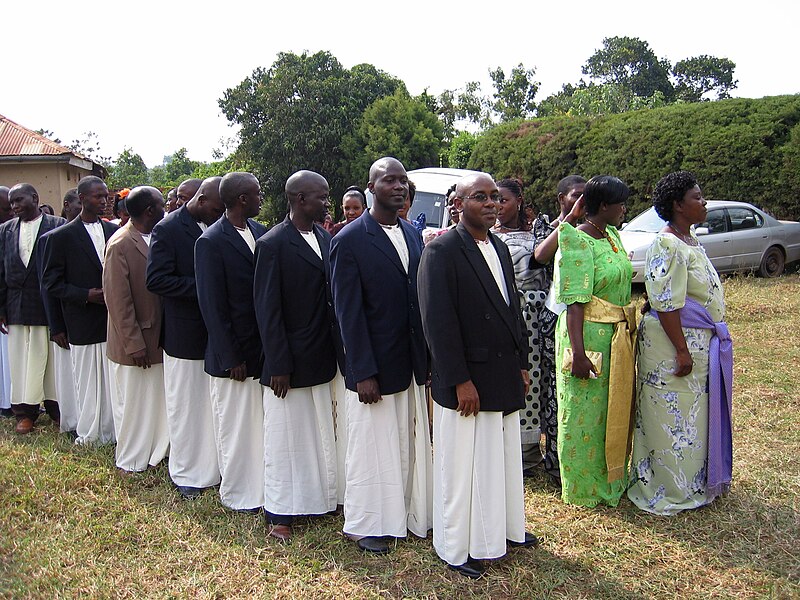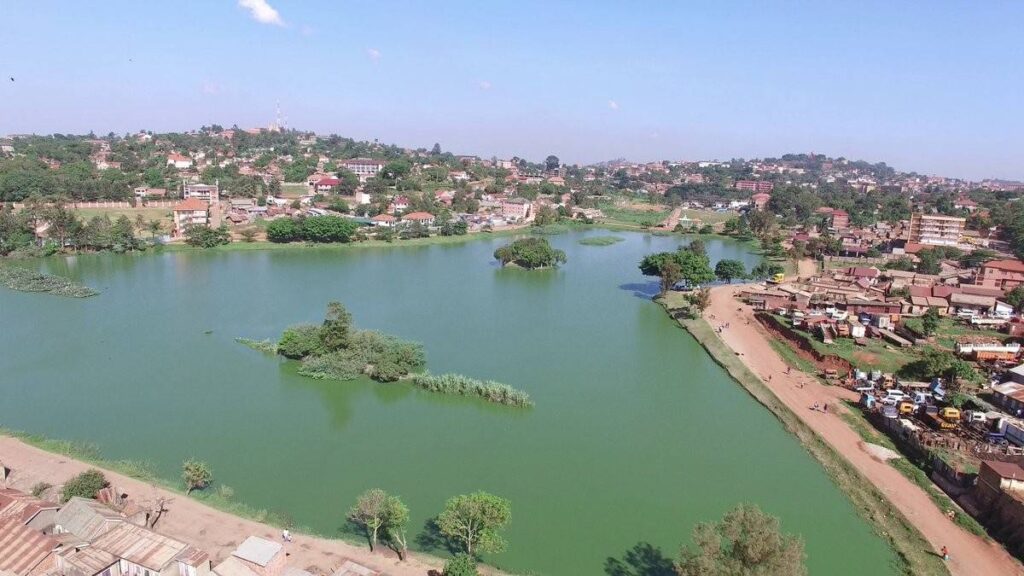Baganda and their culture
Baganda and their culture: The Baganda are found in Uganda, an east African country, on the western and northern banks of Lake Victoria. There are roughly 4 million of them. The old Kingdom of Bunyoro borders the former Kingdom of Buganda on the north, while the Nile River borders the present-day Baganda territory. The modern nation of Tanzania lies to the south of Buganda. The Kingdom of Buganda was the biggest of the ancient kingdoms, and the Baganda remain the largest tribe in Uganda. It makes up just over one-fourth of Uganda‘s entire land area. Buganda is home to Kampala, the capital and largest city of Uganda.

The Buganda language
Luganda is a Bantu language spoken by the Baganda. It belongs to the Niger-Congo language family. Muganda is the single form of Baganda in the Luganda language. Luganda is tonal, like many other African languages, which means that some words have multiple pitches. According to their pitch, words with the same spelling might have distinct meanings. Proverbs, folktales, and metaphors abound in Luganda.
Typical riddles include, for instance:
My wife looks both in the direction she is going and the direction she is coming from (a bundle of firewood, because the two ends are similar).
In order to shave hills—fires used to burn grass for planting—I have a razor blade.
My friend never returned from his trip to get nourishment for his kids (water in a river).
There are spears all around my man (the tongue, ringed by teeth).
The Buganda people’s religion
Nowadays, the majority of people in Baganda are Christians, with a roughly equal number of Catholics and Protestants. About 15% of people are Muslims, or adherents of Islam. The Balubaale cult was an indigenous (native) religion practiced by the majority of Baganda in the second half of the nineteenth century. This was a religion of gods with temples associated with them. Each of these deities was preoccupied with particular issues. There was a deity of the lake, a god of war, and a god of fertility, for instance.
In addition, the Baganda believed in supernatural powers, especially witches, who were believed to bring about disease and other bad luck. Amulets, or charms, were frequently worn by people to ward off their bad powers. The Muzimu, or ancestors, who visited the living in dreams and occasionally forewarned of approaching perils, were the most important spirits. There is no longer a Balubaale cult. Nonetheless, there is still widespread belief in witchcraft and ancestors.
Regardless of their faith, Baganda’s current population is deeply devout.
Family life
Jangu onfumbire (come cook for me) was the customary phrase for marriage. This represented the dominant patterns of authority in the average home. The father and husband were paramount. In deference to his authority, women and children bowed before the husband, who was given his food first. Children in Baganda nowadays often talk about their strong devotion to their mothers and their feelings of dread and respect for their fathers.
Following marriage, a new household is formed, typically in the husband’s village. Although polygamy—having more than one spouse—was not unusual in the past, most marriages are monogamous now.

Buganda clothing
Abusuuti is usually worn by rural Muganda (Baganda individual) women. This floor-length dress has short, puffy sleeves, a square neckline, and vibrant colors. Two buttons on the left side of the collar and a sash over the hips, just below the waist, secure the garment. The busuuti was traditionally constructed of bark fabric and had no straps. On all ceremonial and celebratory occasions, the busuuti is worn. The ekanzu, a long, white cotton robe, is the traditional attire of the Baganda people. It is used with pants and a Western-style suit jacket on formal occasions. Younger folks dress in Western fashion. They also wear suits, ties, skirts, jeans, and slacks.
Learning
In the nineteenth century, missionaries brought formal education and literacy (reading and writing) to Uganda. The Baganda place a high importance on contemporary education and frequently make significant sacrifices to ensure that their children receive an education. A family will pool resources to help a pupil who shows a lot of promise. The family member is required to assist their relatives after completing their schooling.
Athletics
In Uganda, track and field, rugby, and football (soccer) are all popular sports. While ladies play track and field, Baganda boys do all of these sports. The Baganda were known for their prowess at wrestling in the past. This sport was played by men of all ages. There was drumming, singing, and beer drinking at wrestling matches. Nonetheless, defeating the Kabaka was deemed improper. The competitive hurling of sticks and a game of kicking, in which boys stand side by side and try to topple each other, are two more classic outdoor activities for boys.
Hobbies and Crafts
The production of goods from bark fabric was and is important, in addition to basketry and musical instruments. After being soaked in water, the bark of the mutuba fig tree is pounded with a wooden hammer. This produces a pliable substance that is painted and then sliced into different-sized strips. Traditionally, housing partitions were made of larger strips.
Smaller items were adorned with black dye and donned by royal women. Bark cloth was thereafter adopted as the national costume. Bark-cloth gowns are unusual these days. The cotton fabric known as Busuuti has taken their place. Bark-cloth is used nowadays to create ornamental coasters, tablecloths, and designs for cards of many kinds.
The Buganda region’s attractions

The Kabaka’s lake
The Kabaka’s Lake, the largest artificial lake in Uganda, was excavated in 1885 during the reign of Ssekabaka Mwanga II. Many people flock there in hopes of seeing the stunning birds that call its shores home.
Bulange Building: The Trail of Royal Heritage
The most significant in the kingdom of Buganda are the Bulange (Parliament), Twekobe (Palace), Kabakas, Lakes, Namasole (King’s Maama), and Kasubi Tombs (Kingdom cemetery).
The rich customs and legacy of the Baganda people are reflected in the exquisite features of the Kasubi tombs.
